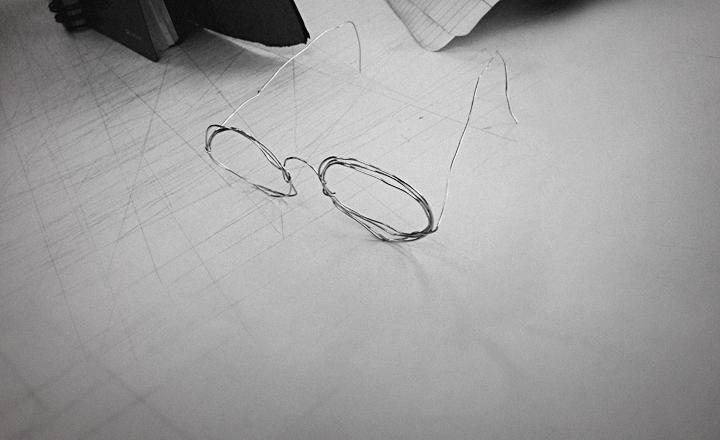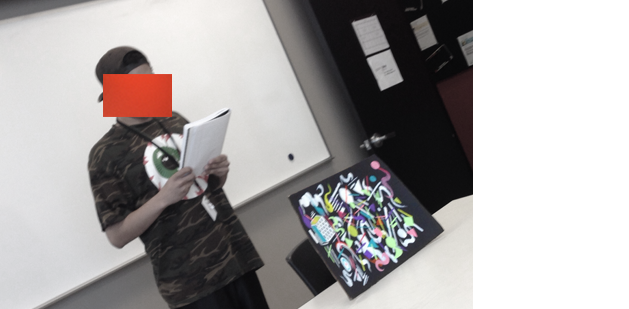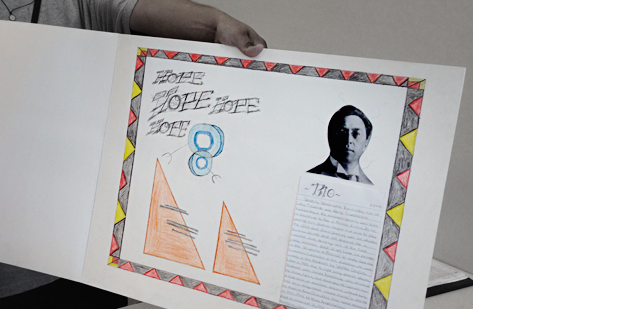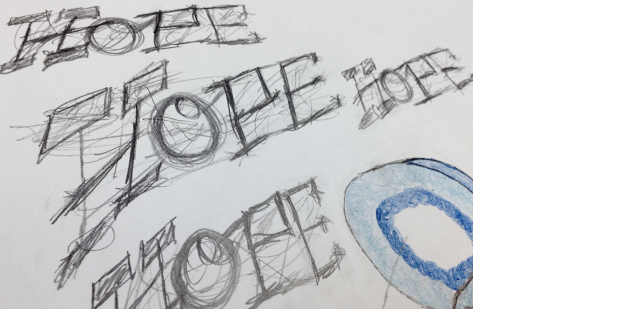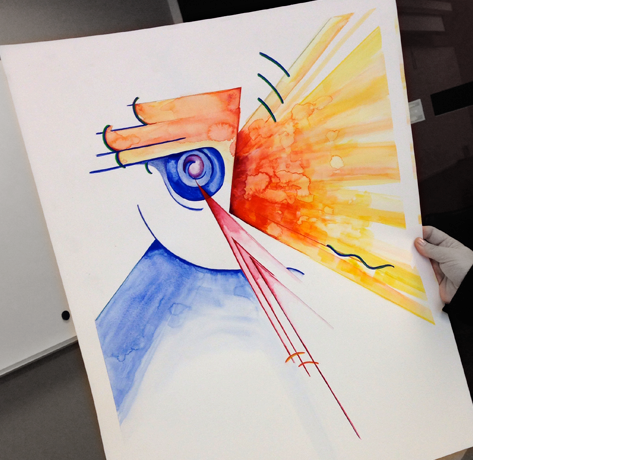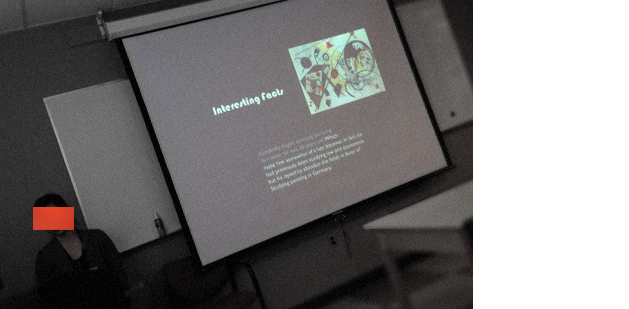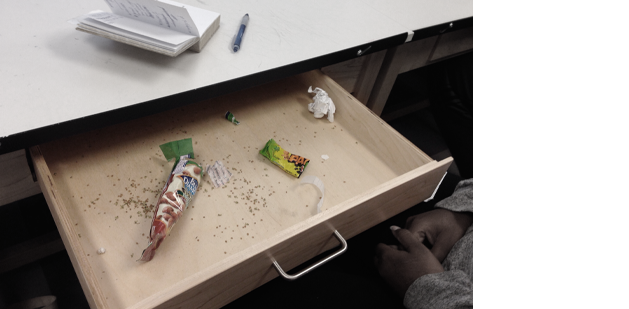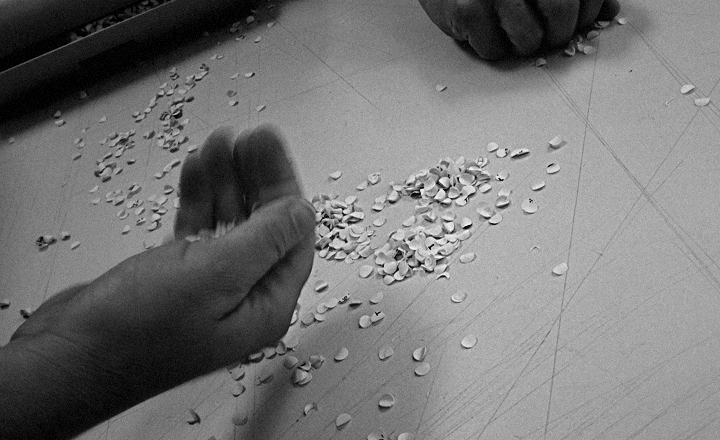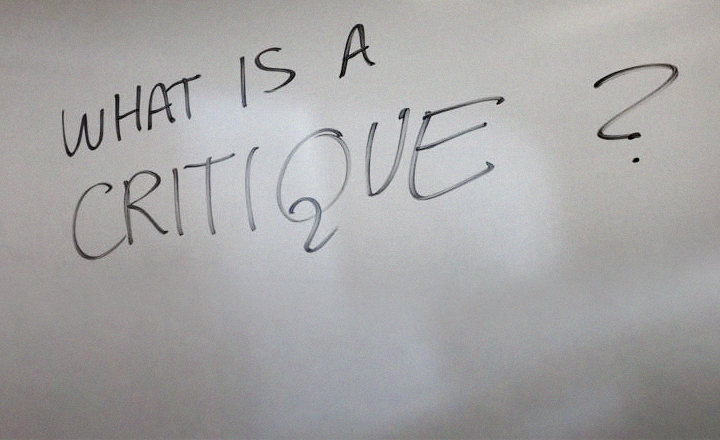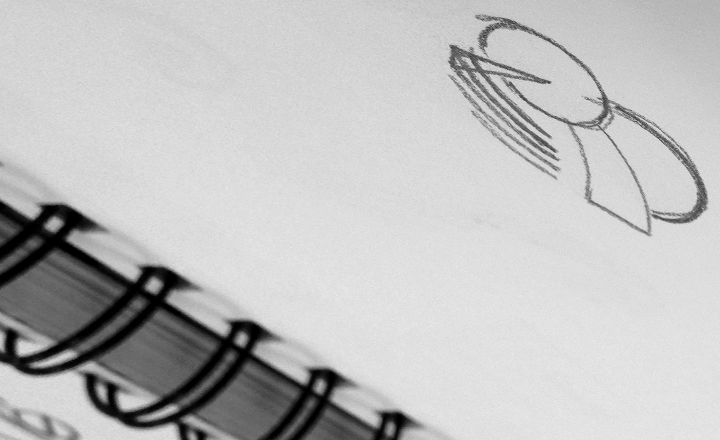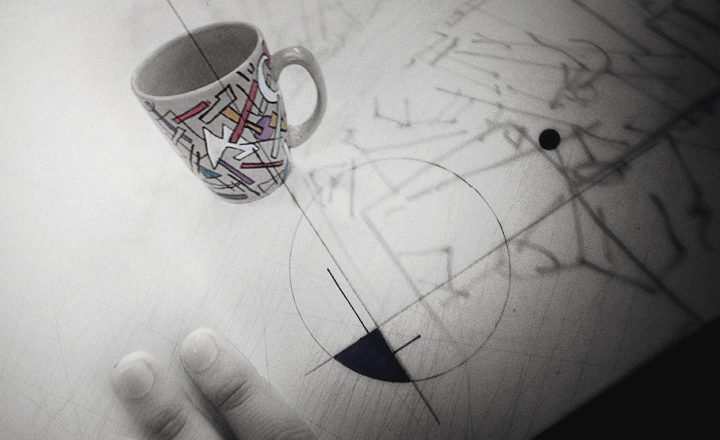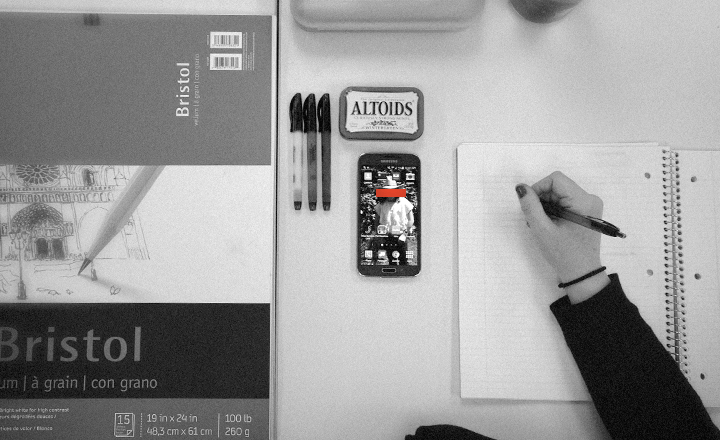Today is mostly presentation.
My original plan for the session was to use more slides from my history class Bauhaus lecture. But since I was building this course very last minute because of scheduling, I found myself with no time to adapt the Kandinsky content.
So I threw it on them: YOU do the research, YOU do a presentation, using whatever approach you wish. And found this goes over so well, I start using it in other classes. And if the whole class is researching the same subject, by the time we’re done we typically have a decent overview of whomever we’re studying.
(Plus, they often find obscure things I may not have found/covered. Which is also good.)
This time thru: Wassily Kandinsky (1866–1944)
And to start, here’s the student-found music we end up discussing:
wassily corrugated
First student to present ended up making art – after really diving into how Kandinsky worked. He gave an overview of his life – the feelings that come from colour and its Universal Correspondence between Triangle, Square, Circle – and zeroed in on Kandinsky running out of materials late in his career, working on cardboard ’cause that’s all he had.
The student used to draw on cardboard election signs because after the election ends, the signs are easy to grab. He decided to go at it again, running through the proportion readings in our text, creating his reinterpretation of Kandinsky on cardboard.
Execution needs work (craft is a bit messy), but the basic design is there. I note it’s a good starting point for an interesting piece – and it’d be good to move on to better supplies, better tools, with careful craftsmanship (I’ll also keep moving him forward with form).
emotional lettering
The next student added Kandinsky’s connection to music, with cello +piano.
‘I admire how he could elicit an emotional response without being tied to traditional imagery.’
He also created a piece of art, which is a valiant attempt, but lacks the point line and plane understanding we’re working on.
But on closer inspection, we found his lettering was a whole other thing.
Student’s location: Garage, with some beer
Music playing: Rosie & The Originals, Stand By Me
In fact, his HOPE scribbles are LOADED with geometry and the elements one might see in a abstract modern piece. A good place to start. We ask where this came from. And similar to what happened in our second class, it was an emotional place. A recent death in the family. With saddness.
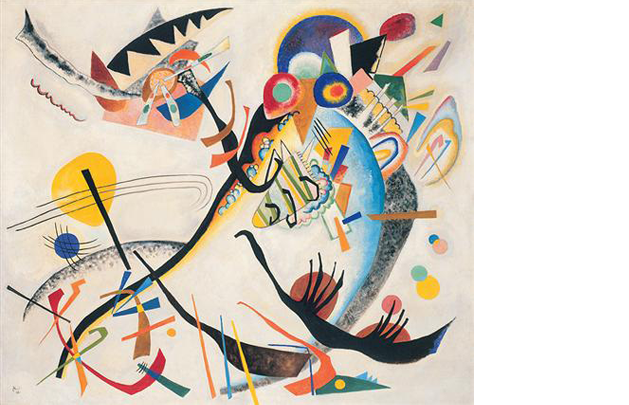
Wassily Kandinsky, Blue Segment, 1921.
neuinterpretation
Waldorf updates her work from last week (above) influenced by Kandinsky’s Blue Segment.
Then, turned sideways, ‘It looks like a chicken, spewing sunlight!’
Kandinsky moved farther into abstraction by falling in love with one of his paintings placed upside down. We talk a bit about how this really takes abstract (and real) work to a whole new place, and is not a bad practice (I do it A LOT in my own work).
Included with this chicken is a well-written, well-presented, spoken word personal overview of Kandinsky – with excellent quotes peppered about:
‘Colour is the keyboard, the eyes are the hammers, the soul is the piano with many strings. The artist is the hand which plays, touching one key or another, to cause vibrations in the soul.’
—Wassily Kandinsky

Claude Monet, Wheatstacks (Sunset, Snow Effect), 1890–91
On Monet’s impressionist paintings of Haystacks, ‘That it was a haystack the catalogue informed me. I could not recognize it. This non-recognition was painful to me. I considered that the painter had no right to paint indistinctly. I dully felt the the object of the painting was missing. And I noticed with surprise and confusion that the picture not only gripped me, but impressed itself permanently on my memory. Painting took on a fairy-tale power and splendor.’
—Wassily Kandinsky

Wassily Kandinsky, Komposition 8, 1923
‘Music is the ultimate teacher … Yellow is the colour of middle C on a brassy trumpet; black is the colour of closure, and the end of things; and that combinations of colours produce vibrational frequencies, akin to chords played on a piano.’
—Wassily Kandinsky
filler
Up next is a few have to get the homework done presentations where students found SOME stuff, but not too much. At one point no one in the class is paying any attention to one of the speakers. Even the speaker isn’t paying attention to their own talk. Because (we discuss) if you put no effort into your work, your audience will put no effort into engaging with you.
The I’ll decide what work I’ll do student brings in three (blurry) selfies taken at a night club – and notes the lights behind him look a lot like Kandinsky’s work. And that’s about it.
‘I don’t do research, and I’ve never done it before,’ comes from the Star Wars kid, who arrives to class over two hours late (unfortunately, he misses the better presentations).
At one point in his (mostly academic) presention, he gets a little personal about Kandinsky: ‘I like that he incorporates music. I like music myself. I was listening to Clip Your Wings by Old Gray while looking up things.’ THIS gives me a lot more info to go on, gunna keep working on this kid. Harness this, if I can.
We learn from others that Kandinsky was originally a lawyer. Went into art at age 30. Most of his work was destroyed by the Nazis. And his birthday listed at Wiki is wrong because of the switch to the Gregorian calendar. No one touches on his relationships, which a previous class had a very tabloid approach to how they were affecting his work.
And we have a long dissertation as to how it’s really cool that Kandinsky stopped being a lawyer. Student says: ‘’Cause that’s what my family wanted me to be. And I hate lawyers.’
‘Also I did a piece and left it at home. Homework was not on my mind.’
I (again) note that I fail a LOT of students for things like family, relationship problems, and jobs affecting classwork. (It’s a thread that runs through all my teaching: Many, MANY students who have families set against them studying a creative discipline and/or going to college).
audio visual
(And now seems to be as good a time as any to refer them to Indra Kupferschmid’s True Type of the Bauhaus. ’Cause it ALWAYS comes up eventually.) (I’m referring to the font used on the above slide.)
We end with two interesting slide presentations that adapt music to image. In this case Mozart and Project 86. They play out a bit like this video, but different:
The students bring up Kandinsky first experiencing synesthesia as a kid – and how his ability to HEAR sound moved him into his abstract world. In relating to Kandinsky, the student mentions her brain is ‘always moving too. I’m a film major and I’m on a spiritual journey – I can look at art and how it moves me pushes me farther with my own stuff. People experience film differently.’

Wassily Kandinsky, Picture with a Black Arch, 1912 (This one reminds me of Draplin)
time for building!
Students had to bring in a found item to work with. They (mostly) did and I ask them to open the drawers in their art desks. Cause last I checked NO ONE had emptied the drawers in a very long time. They’re loaded with pencil shavings, wrappers, all types of shit. Some more than others.
‘Whatever is in your drawer is the rest of your found items. Please use them for your homework.’
Kandinsky CAUSE +EFFECT ASSIGNMENT
Create two squares: 8x8 inches
Using your found objects, develop your two squares showing a reaction to his work. Include HUE and PITCH, SATURATION and SOUND. Listen to at least three songs from four DIFFERENT bands.
And I start them out with a little bit of
FLOMMISCHEN número 32
« combustion arrogante »
16 tracks [1hr 19 min]
(And a discussion starts about Holst’s MARS as to whether or not it’s Star Wars)
Next part of homework:
Once your squares (which may end up as sculptures) are done, go to FOTOFORM and DIAGRAM out the squares you just created.
You should end up with a total of four squares. The geometric interpretations can have all three POINT, LINE, PLANE drawings on top of each other (I throw this in just to see what happens. ’Cause I usually get a bunch of boxes all over the place and the students end up overwhelmed; MAYBE this will fix, this group loves complexity).
As predicted, there are questions. And no one has visited FOTOFORM since last week. So I explain a bit, but let them go – cause next class we’ll really get into how these concepts work. I hope.
Plus, READ Design Basics Chapter 5, pages 88–89; 92–93; 96–97
—steve mehallo
Image up top: Student-made Kandinsky wireframes
Last year, FLOMM founder Steve Mehallo rebuilt a design fundamentals course into a five week study of theories and work done at The Bauhaus (1919–33). This BAU blog series will document the latest teaching of the course – with lesson plan – Summer 2015 to a group of 8 college students. What’ll happen, who’ll shine, who’ll drop. Names (and some situations) have been changed to protect the innocent as well as the guilty.
co
nti
nue
read
ing —
forward to BAU6 • • •
· · · back to BAU4
PLEASE SUPPORT FLOMM
TIPS + DONATIONS DISCREETLY ACCEPTED






